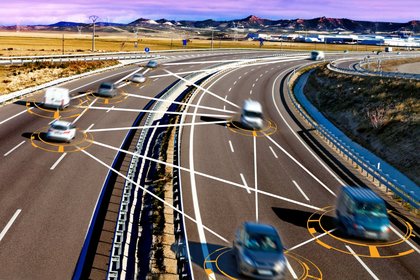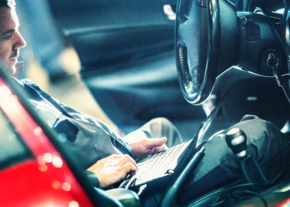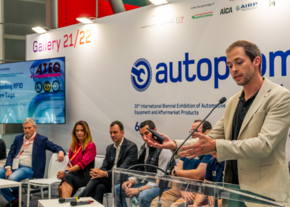
18/02/2019
Connected cars and smart infrastructures between V2X technology and 5G networks
Simonluca Pini – Contributor Editor de Il Sole 24 Ore
Not just self-driving cars and electrification. Connectivity, in fact, is the latest automotive trend, from on-board connectivity to communication between vehicles and infrastructure.
Cars able to warn other vehicles of imminent danger or detect the current road conditions in real time. Not to mention infrastructures that communicate with cars and other vehicles pointing to the best route to avoid rush hour traffic or bottlenecks. In the age of the Internet of Things intertwined with the Internet of Cars, the automotive world is set to take the concept of communication to new levels with cars able to communicate with each other and with the surrounding infrastructures. Communication is also at the heart of the C-V2X (Cellular-Vehicle-to-Everything) standard, a technology that makes communication possible between our cars and street furniture such as traffic lights or street lamps. As things stand, a few vehicles are already able to communicate with each other through C2X protocols (Car-To-Communication), but such exchange of data is limited to vehicles of the same manufacturer or group. As the C-V2X protocol expands, and new players become protagonists in the automotive sector such as Qualcomm and Huawei, our cars will communicate with other road users in real time courtesy of 5G technology, making a qualitative leap in terms of safety, efficiency and entertainment, connecting with commercial activities. One of the most important features of the C-V2X protocol is that it offers vehicles low-latency communications for V2I (Vehicle-to-Infrastructure), Vehicle-to-Vehicle (V2V) and Vehicle-to-Pedestrian (V2P) communication models without the use of a mobile network, but operating in a dedicated 5.9 GHz spectrum. This translates into better performance and greater compatibility between systems. By 2022 it is very likely that all newly registered cars will be connected and able to communicate with each other. Confirming how data sharing will shape the future of mobility, from 2025 the Chinese government will only allow the registration of cars capable of sending and receiving information between vehicles and the environment in which they move. In a scenario where smart cities will replace traditional cities, travelling on “four-wheel devices" will be quite normal, making it possible to access onboard apps able to meet the most diverse needs, being an integral part of a system where cars can communicate with commercial activities, infrastructure and other road users. In a context where the Internet-of-Things meets the Internet-of-Cars, technical innovations are expected to grow exponentially. Several operating systems, already present on top-of-the-range models, create a common thread between home, work and the road with technology that reminds us of not-to-be-missed appointments such as school meetings with our children’s teachers as well as pointing the shortest route to arrive on time according to traffic conditions. Furthermore, we will witness growing ties between our smartphones and cars, with the first as indispensable allies thanks to the presence of embedded satellite navigators and the possibility of listening to music in streaming in every situation. Besides entertaining us, these devices will turn into "mobile sensors", detecting and reporting the condition of the roads we travel on (including bridges and viaducts). All this will be possible thanks to the work of the Senseable City Lab Consortium of the Massachusetts Institute of Technology (Mit) in Boston, directed by the Italian Carlo Ratti. Following the announcement of an agreement between Anas and Mitdi, this technology will be tested on two motorway sections under Anas management, specifically the A90 Great Ring Road in Rome and the A91 Rome-Fiumicino Airport, with the first tests scheduled for February 2019. This technology allows to make full use of the data contained in the accelerometers found in each smartphone: three MIT researchers will collect the data from users transiting on both routes, especially vibrations and noise, and this will provide (once all the data has been put together) a first daily real time screening on roads, bridges and viaducts.








